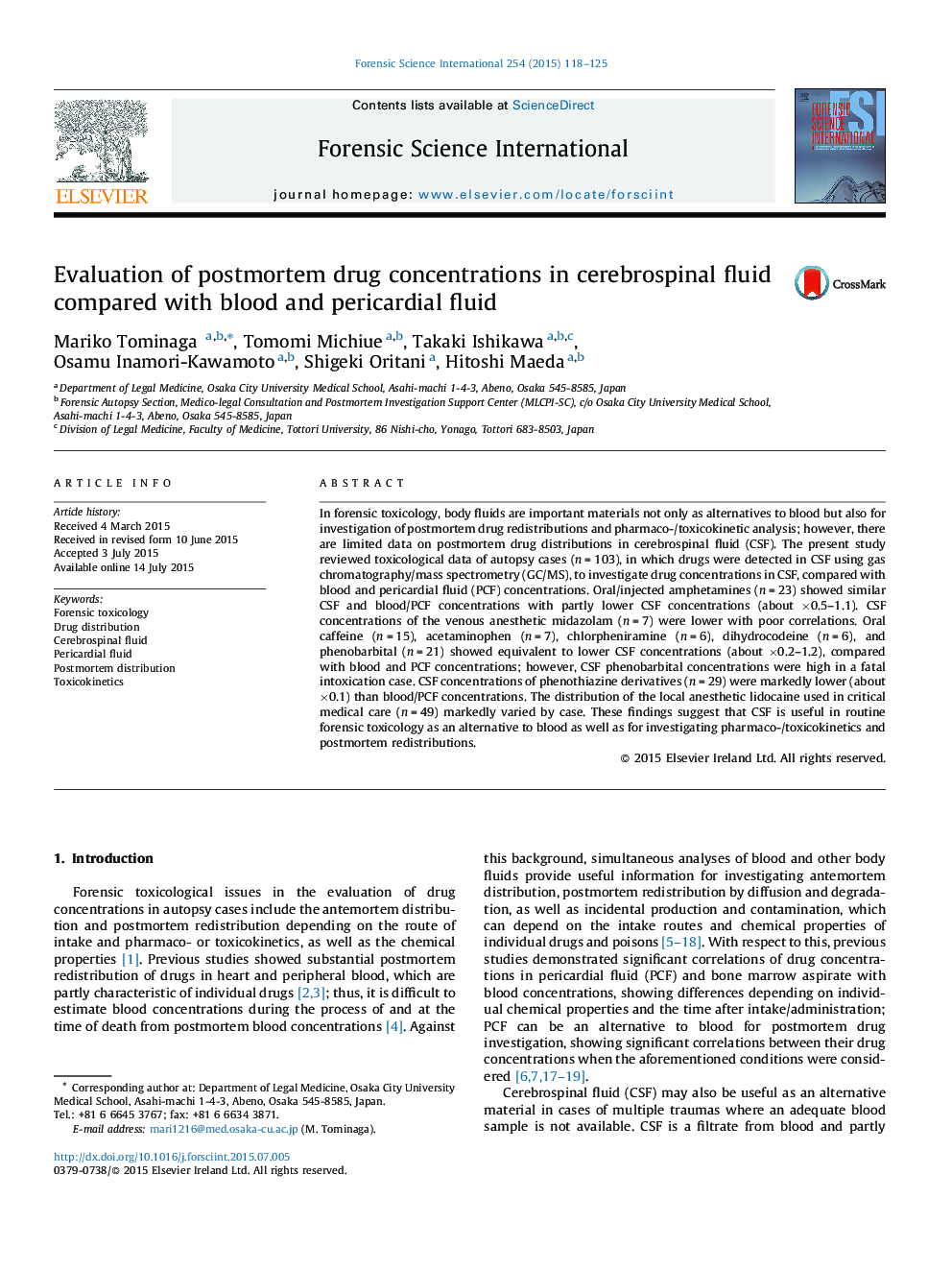| Article ID | Journal | Published Year | Pages | File Type |
|---|---|---|---|---|
| 95336 | Forensic Science International | 2015 | 8 Pages |
•Several drugs showed significant correlation between cerebrospinal fluid and blood or pericardial fluid levels.•Cerebrospinal fluid in forensic toxicology as an alternative to blood.•Routine investigation can contribute to assessment in individual cases.
In forensic toxicology, body fluids are important materials not only as alternatives to blood but also for investigation of postmortem drug redistributions and pharmaco-/toxicokinetic analysis; however, there are limited data on postmortem drug distributions in cerebrospinal fluid (CSF). The present study reviewed toxicological data of autopsy cases (n = 103), in which drugs were detected in CSF using gas chromatography/mass spectrometry (GC/MS), to investigate drug concentrations in CSF, compared with blood and pericardial fluid (PCF) concentrations. Oral/injected amphetamines (n = 23) showed similar CSF and blood/PCF concentrations with partly lower CSF concentrations (about ×0.5–1.1). CSF concentrations of the venous anesthetic midazolam (n = 7) were lower with poor correlations. Oral caffeine (n = 15), acetaminophen (n = 7), chlorpheniramine (n = 6), dihydrocodeine (n = 6), and phenobarbital (n = 21) showed equivalent to lower CSF concentrations (about ×0.2–1.2), compared with blood and PCF concentrations; however, CSF phenobarbital concentrations were high in a fatal intoxication case. CSF concentrations of phenothiazine derivatives (n = 29) were markedly lower (about ×0.1) than blood/PCF concentrations. The distribution of the local anesthetic lidocaine used in critical medical care (n = 49) markedly varied by case. These findings suggest that CSF is useful in routine forensic toxicology as an alternative to blood as well as for investigating pharmaco-/toxicokinetics and postmortem redistributions.
